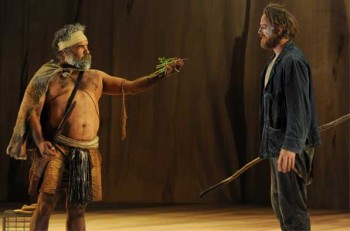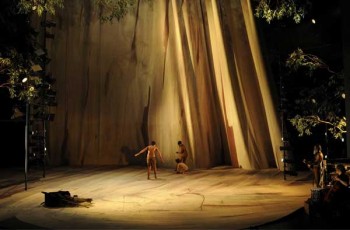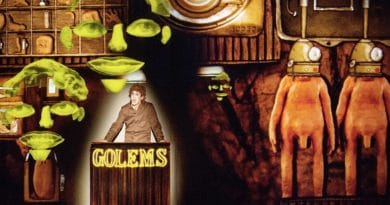The Secret River – QTC
If the palpable silence that descended with the curtain and persisted until everyone filtered out of the theatre is any indication, QTC’s The Secret River packs an emotional and intellectual punch.

In Colonial Australia, racism is rife. White people do not understand Aboriginals and therefore fear them. Englishman William Thornhill has been shipped out to Botany Bay to serve a life sentence for stealing timber. When freed he, along with his wife and sons, buy 100 hectares on the Hawkesbury River and begin farming, ignoring the Aboriginal inhabitants of the land.
However, as William and his family get to know the Aboriginals in the area, they recognise their similarities and become neighbourly- their children play together, they give each other gifts of bark dishes and food. There is still residual resentment as each group sees the land as rightfully theirs and hopes ‘the others’ will leave.
History has shown that humans have an amazing ability to ‘otherise’ and dehumanise people who are not like them, and even though the Thornhills have the ‘epiphany’ that the Aboriginals are just like them, it remains to be seen whether this new understanding holds when pressure builds and emotions are high.

The Secret River has gone from page, to screen to stage. In QTC’s production, the entire cast delivers strong and engaging performances. Steven Curtis’ simple yet effective set evokes Australia’s natural beauty, and the use of the full height and depth of the Playhouse stage highlights the humble place humans have in nature. The floor is covered in dirt/sand, allowing the characters to literally make their mark on the land. Mark Howett’s spectacular lighting allows the backdrop of the trunk of an enormous eucalyptus tree to bring different times and places to life when it is lit by silver moonlight, or a sunset pallet of oranges, pinks and blues.
The frequent use of music (often from an onstage piano and cello) gives the play a filmic feel, and underscores moments of particular dramatic tension. The Secret River is also one of very few productions to make use of smell (smoke from a fire onstage) to draw the audience into its world.

This play is an exploration of a painful part of Australia’s history, as well as the meaning of home. Is home something you create? Or a place you will always have an attachment to? Or is home wherever family is? The issues this play explores may be familiar, but there is an important story to tell here. The horrific treatment of indigenous people is easy to attribute to faceless authorities and is somehow more confronting when ascribed to individual perpetrators. Because the indigenous characters only speak in Dharug (and there were no surtitles) I was slightly concerned that the majority of the audience might understand their point of view less than the white perspective. Does this better explain, excuse, or justify their atrocities? Given the conclusion of the play, probably not, but it is worth bearing in mind that this story is still from a white perspective. Alternatively, the use of Dharug may encourage those who do not speak it to more actively try to understand and engage with the Aboriginal perspective.
One of the last images of the play was William Thornhill tallying the days he spent by the Hawkesbury River on the trunk of the eucalyptus. The effect was a symbolic representation of the scar of our shared history. The wound stretched half way across the trunk, demanding ‘what happens next?’



